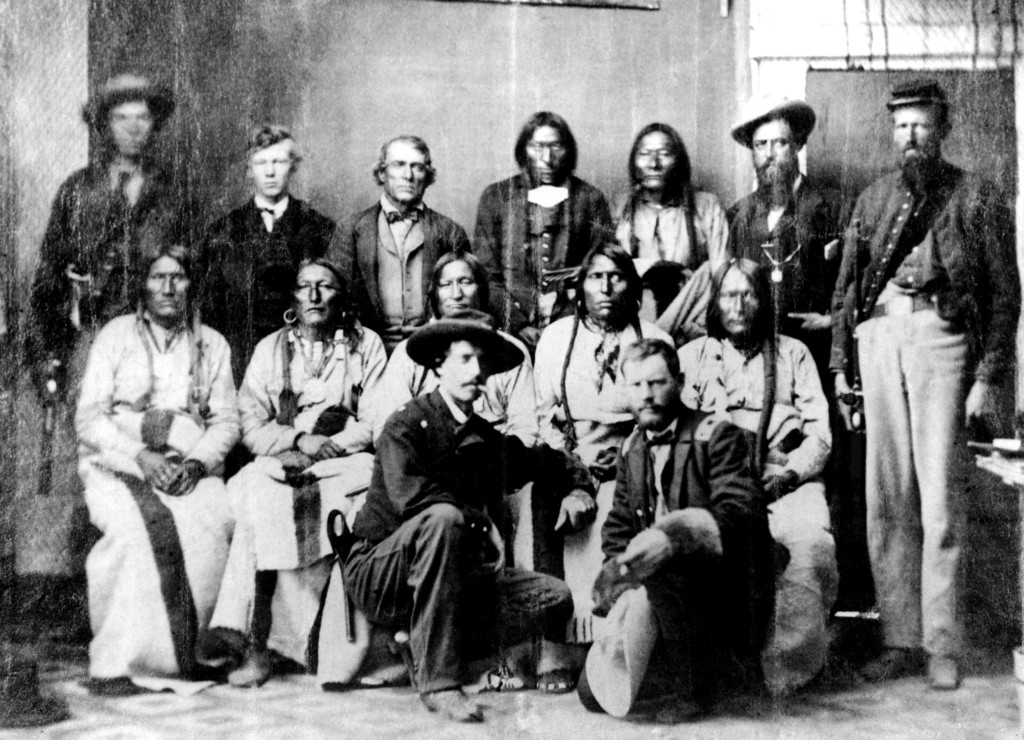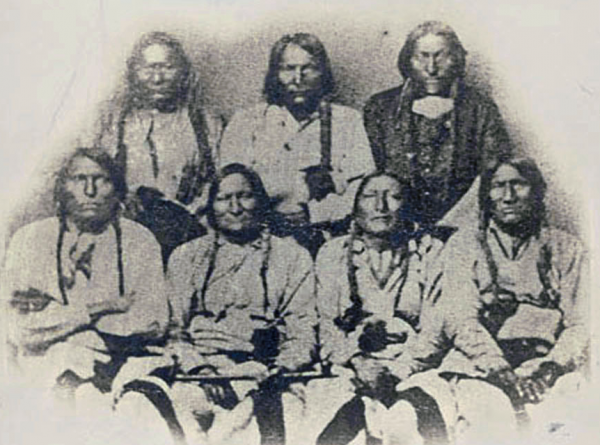Listen to this article

Credit: Denver Public Library
When: around 1803- 1868
Where: South Dakota
Why Important: Native American peace negotiator
Biography
Black Kettle was born in South Dakota around 1803 (no one is quite certain what year he was born) into the Cheyenne Nation. Not much is known of Black Kettle’s earlier life, however he clearly possessed leadership skills as he was made a chief in the Council of Forty-Four, the tribal government of the Cheyenne.

Credit: National Park Service
In 1859, with the arrival of prospectors from the United States looking for gold in Colorado Territory, conflicts arose between the Native Americans in the area and the miners who were taking over their land. Initially a peace was brokered in 1861 at Fort Wise, resulting in the Fort Wise Treaty1 which provided land near Sand Creek for the tribe to live. Black Kettle was one of the main negotiators of the treaty on behalf of the Cheyenne. Many young Cheyenne, as well as Arapahoe, Utes, Kiowas, and Sioux warriors disagreed with the treaties and the relinquishing of their land to the settlers. These warriors made up a large group calling themselves the “Dog Soldiers” and waged war upon the settlers.2 This increased tension between the Native Americans and the settlers. In response, the United States provided military troops to try to combat the Dog Soldiers resistance efforts. What resulted was the Sand Creek Massacre in 1864 led by Colonel John Chivington.3 Black Kettle was present during the assault, but managed to escape.4
Despite the attack and the broken peace treaties, Black Kettle still tried to negotiate peace for his people. He signed the Little Arkansas Treaty in 1865 and in 1867 the Medicine Lodge treaty. These treaties moved the Cheyenne to southwest Kansas, but did not include their hunting grounds. Due to this, the Cheyenne’s ignored the treaty in order to hunt and the Dog Soldiers continued to fight against the settlers,5 despite Black Kettle’s pleas to keep peace.
Because the Cheyenne were breaking the Medicine Lodge treaty, General Phillip Sheridan of the United States army coordinated an attack on Black Kettle’s tribe. Lead by Lieutenant Colonel

George Custer on November 27, 1868, the troops fired into the sleeping encampment at dawn killing around thirty Cheyenne, including Black Kettle and his wife, who were shot while trying to escape on horseback.6
During the later years of his life, Black Kettle tried in vain to preserve a place for his people, knowing that the Native Americans of the plains could not possibly win a fight against such a numerous and formidable foe. Despite the untrustworthiness of the United States, Black Kettle was quoted as saying, “Although wrongs have been done to me, I live in hope.”
Learn More:
- The Newest in New - July 26, 2017
- Keys to Mysterious Places - July 11, 2017
- Good Old Fashioned Barbecue - July 7, 2017
